

Agridisk
Egypt - Alexandria
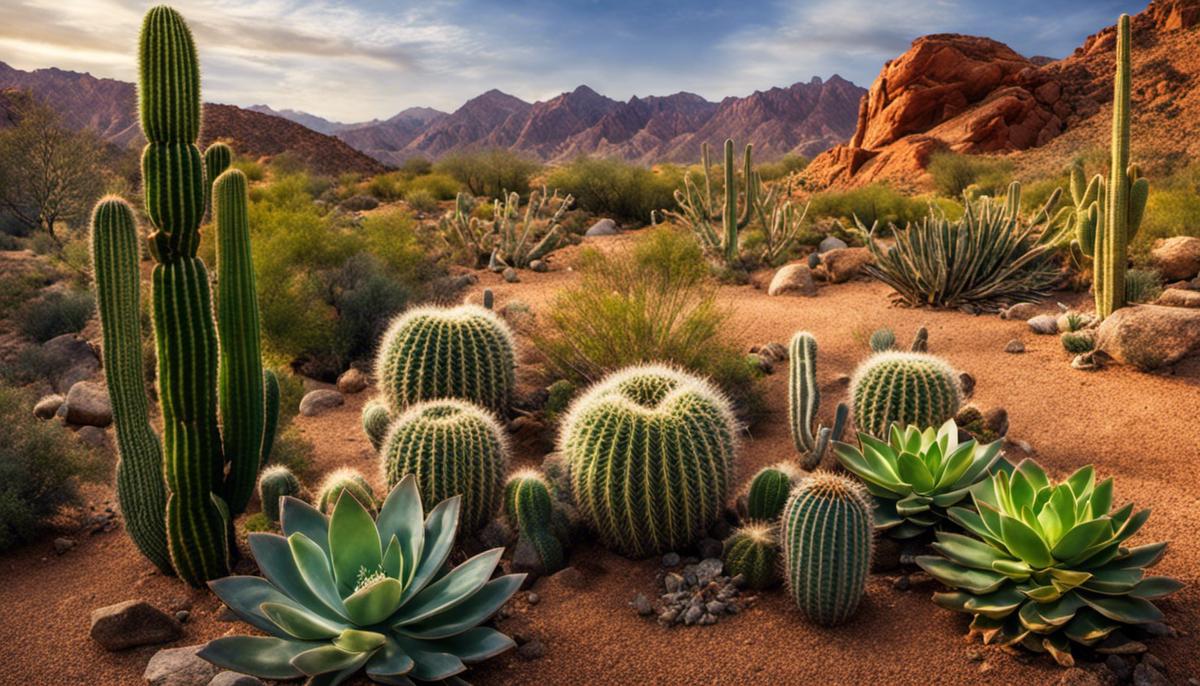
What's the Difference Between Cacti and Succulents?
Description: Our planet is home to a remarkable diversity of flora, fostering an unending curiosity and fascination among enthusiasts and botanists alike. One such intriguing group of flora falls under the auspices of 'succulents', a term that encapsulates a vast assortment of plants renowned for their water-retaining features. Within this broad group, a singular family known as 'cacti' has made an indelible mark, captivating many with their unique appearances and adaptability. Although often used interchangeably, cacti and succulents are two distinct groups that exhibit particular differences in their physical aspects, habitat adaptions, and care requirements. By delving into the intricate world of these plants, we shed light on what truly makes a cacti and succulent, how they fit into the botanical realm and how best to care for them, making this exploration an enlightening journey for avid hobbyists and curious novices alike. An encounter with quintessential desert flora like Cacti or Succulents may leave us pondering, what really sets the two apart? Their chubby stems drenched in mesmerizing hues, and powerful survival mechanisms make them a charismatic choice for ornamental purposes. However, amongst the marvelous similarities, there lie prominent differences that make each plant uniquely fascinating. Now, let's get right down to the nitty-gritty: What qualifies a plant as a Cactus or a Succulent? The confusion is understandable because, quite simply put, all cacti are succulents, but not all succulents are cacti. That being said, while they all thrive in harsh desert climates, their core differences boil down to their physical characteristics and physiological attributes. Succulents earned their name due to their succulent, or juicy, tissues. These plants are drought-tolerant thanks to their amazing water storage capabilities. They achieve this by maintaining fleshy or swollen parts such as leaves, stems, or roots where they can store ample water. Think of these delightful beings as little repositories of life, holding onto every bit of moisture they can get. On the other hand, cacti are specialized plants defined by their unique feature: areoles. Areoles are specialized growing points, typically appearing as small, round, cushion-like mounds of flesh from where spines, flowers, and more cacti branches grow. If a plant doesn't have areoles, it's not a cactus, no matter how it might look. Although succulents rarely have areoles, they do feature leaves – even if they are shaped, sized, and colored differently. These leaves can take on various forms, from flat and wide-spreading as seen in the jade plant, to almost non-existent as witnessed in the species like Euphorbias. The spikes on Euphorbias, often mistaken for cactus spines, are technically bracts, modified leaves. On the contrary, cactuses have abandoned the need for leaves. Most have converted their leaves into spines which sprout from areoles. These spines protect the cactus from predators, reduce water loss, and provide shade. It’s also interesting to note the blossoming behavior of these plants. While both cacti and succulents are known for their beautiful flowers, cacti often have larger and more impressive blooms. Succulents, meanwhile, tend to flower on long stalks away from the main body of the plant. In the vast world of desert flora, dwarfed by the multitude of species, the line that separates cacti and succulents might seem to blur. Yet, armed with a discerning eye and understanding of their unique characteristics, the budding plant enthusiast can identify and appreciate the subtle and not-so-subtle differences these remarkable plants exhibit. Remember, the next time you encounter a chubby plant with needles, take a moment to appreciate its magnificent survival strategies—but don’t forget to look for areoles before calling it a cactus! It could very well be a succulent trying to blend in. Happy Planting! Cacti and succulents, with their myriad forms, captivating colors, and thoughtful adaptations, lend a distinctive delight to the hobbyist's collection. Such enthusiasm, understandably, stirs curiosity about their botanical background. Diving deep, we uncover an exciting world full of intricacies about how these desert jewels are classified. At the fundamental level, both cacti and succulents are categorized based on the plant kingdom taxonomy chart. For cacti, every member belongs to the Cactaceae family under the larger umbrella called the Caryophyllales order. The Cactaceae family itself houses around 127 genera with roughly 1750 known species. Succulents, on the other hand, are more broadly distributed across various plant families. They do not have a family exclusively of their own like cacti, primarily because ‘succulent’ is a descriptive term. These moisture hoarders are scattered across 60 plant families, including Aizoaceae, Asphodelaceae, and Crassulaceae, each marked by typical growth forms and attributes. This classification is subject to further complexities too. For instance, identifying a succulent can be a daunting task as not all plants with succulent characteristics get the succulent status. As a rule of thumb, a plant should possess three out of five features like a thickened, water-storing organ, compact shape, unusual or lack of leaves, roots close to the soil surface, and CAM metabolism (a tactic that allows plants to photosynthesize even with the stomata closed) to qualify as a succulent. When you understand the botanical classification, you start to appreciate the nuances in the world of cacti and succulents even more. This knowledge can also enrich your cultivation practices. For instance, plants from the same family or order often share similar care needs, and understanding their native habitats can provide valuable hints for their cultivation. However, taxonomic classification should not be treated as hard-and-fast rules, as thanks to hybridization and genetic anomalies, you're likely to encounter oddball species that don't neatly fit into these categories. Now, equipped with this knowledge, we can charge forth into the world of aged Agaves, vivacious Vs, and countless other unexplored species with newfound admiration and understanding. The language of botany is complex, but, oh, what a fascinating language it is! The journey ahead in the cacti and succulents world promises more thrill, surprise, and delight at every turn. Now that we have a robust understanding of the structure and general botany of cacti and succulents, let's delve into their specific care requirements. Armed with the knowledge of their native habitats and distinct physiological features, we are ready to recreate those conditions as closely as possible in our cultivation strategies. First and foremost, one must never forget that the majority of cacti and succulents hail from arid environments. Their watering needs are minimal and overwatering is one of the most common killers of these charming plants. Remember, succulents store water in their leaves and stems and most cacti in their thick-walled, spongy tissue. Hence, it is recommended to follow a thorough but infrequent watering routine. The golden rule is - When in doubt, lean towards under-watering! Next, lighting conditions are equally crucial for these sun-lovers. Most cacti and succulents thrive best under full to bright indirect sunlight. Dark corners of your house might not be the ideal locations for these xerophytes. About six hours of light per day is what they usually crave. So, investing in appropriate lighting for indoor plants or choosing apt placements for outdoor ones will surely reap reward in the form of blossoming plants. Adding to these, the soil medium plays a significant role in their well-being. Naturally, these plants grow in dry sandy soils with excellent drainage. So, a specially formulated mix for cacti and succulents or a homemade mixture of well-draining potting mix, coarse sand, and perlite or pumice works flawlessly for these desert dwellers. Temperature is another important factor, and is dictated by the native habitats of these plants. Nevertheless, they can withstand a wide range of temperatures from freezing to hot—but remember, sudden drastic changes can cause stress and damage to these resilient yet sensitive plants. When it comes to feeding these plants, they chirpily spring to life with a balanced cactus and succulent fertilizer. A little goes a long way with these plants needing fertilizing once in the growing season, spring through late summer typically. Last but not least, let’s not forget the respect for their space. Cacti and succulents appreciate not being crowded. Each plant should have enough room to grow and breathe, not just for aesthetics or ease of care, but to prevent potential fungal and pest infestations that tend to thrive in densely planted arrangements. Thus, with watering, light, soil, temperature, feeding, and space collectively being the bedrock of cultivating cacti and succulents, a keen observer armed with this information can transition from a beginner to an experienced hobbyist in no time. So let's march forth, donning our green thumbs, to build a captivating garden of these hardy, yet intriguingly beautiful plants! Which to choose – cacti or succulents? A tricky question indeed, as both bring their unique charm to every room and backyard. As we delve deeper, we come to factors such as ease of care, and how these desert flora thrive in different environments. Another important factor to consider is the propagation techniques of both. Are seedlings your preferred method or is leaf and plant cuttings more your jam? Starting your cacti from seeds might require more patience, but boy, the satisfaction when you see those tough little seedlings sprout is just too rewarding. On the other hand, propagating succulents from leaf cuttings feels like a walk in the park! A laid-back afternoon, snipping here, shifting there, and voila – you have a new generation of plump, juicy succulents at hand. Then we have the aesthetic aspect. Cacti, with their stark, somewhat rough outlook brings a sense of wild, untouched desert beauty. These enduring beings, most peaking in spectacular blossoms once a year, can truly be the crowning jewel of your collection. On the other hand, succulents come in diverse shapes and varying hues, adding a riot of shapes, textures, and colors to your spaces – both indoors and outdoors. Moreover, potting and repotting are essential aspects of cultivating these delightful plants! Cacti bear the rough handling during repotting like a champ, sort of a true-life tough guy in the plant world! Succulents, however, though no less resilient, do require a tad more tender touch. Cacti gives a vibe of strength, endurance, and an unbroken spirit. Some hobbyists perceive them as embodiments of sheer will power, thriving amidst nature's harsh odds. Succulents, soft and yielding, often symbolize enduring and eternal love. They balance the hardiness of life with a soft charm, surviving the desert heat through adaptation and change. They reassure us that vulnerability and resilience can co-exist beautifully. Finally, the choice could also boil down to the kind of environmental message you want to channelize. Both cacti and succulents serve as reminders of the majesty of life in arid regions, which are often overlooked in conversations about climate change and eco-diversity. Choosing between cacti and succulents goes deeper than simple plant care or aesthetic appeal - it's about expressing a love for nature’s diversity, resilience, and sheer will at life. So the next time you're caught in this conundrum, don't be too harsh on yourself. Remember, be it cacti or succulents, each addition to your gardening journey is a slice of desert magic, right in your own space. And isn't that the essence of this wonderful hobby? Each plant, be it a cacti or a succulent, tells its own unique tale - a story of adaptation, resilience and beauty. Whether it’s the distinctive rounded shape of a barrel cactus, or the lush, plump leaves of an aloe vera, these plants serve as a testament that nature blooms even in the face of adversity. They not only offer a captivating aesthetic appeal but also provide a fulfilling nurturing experience for those who care for them. By understanding their requirements and respecting their natural processes, one can truly appreciate the splendor these plants add to our lives and our environment. Your decision to bring cacti or succulents into your space should thus be a blend of personal preference and informed care considerations, allowing for a mutually beneficial bond between you and the plant. This intimate connection with nature serves as a constant reminder of the wonderful complexity and resilience of life on Earth. Cacti and Succulents, Some believe that they are one thing, but although they are closely related to each other, there is a difference between cactus and succulents, as the word "cactus" refers to a plant family, and succulents refer to a broader group that refers to a type of plant that is included in many plant families, while All cacti are succulents, but not all succulents are aloe vera. Cactus is one of the most popular plants even for those who do not care much about plant breeding, and this may be due to the fact that the cactus plant is considered one of the most famous plants in the world of Hollywood films, which contributed to turning the plant into an icon of the plant, while succulents do not gain that fame. Aloe vera is distinguished from the rest of the succulents through the indentations and round spaces along its stems, and they are called "areoles", for which the cactus is famous. Small to giant. There are types of succulents that are edible, and the delicious and nutritious succulent leaves can be used to make salads. In addition, some people can drink juice from the aloe vera plant.Understanding Cacti and Succulents
Delving into the landscape of desert flora may make one realize the incredible extent of diversity and harmony nature blesses us with.
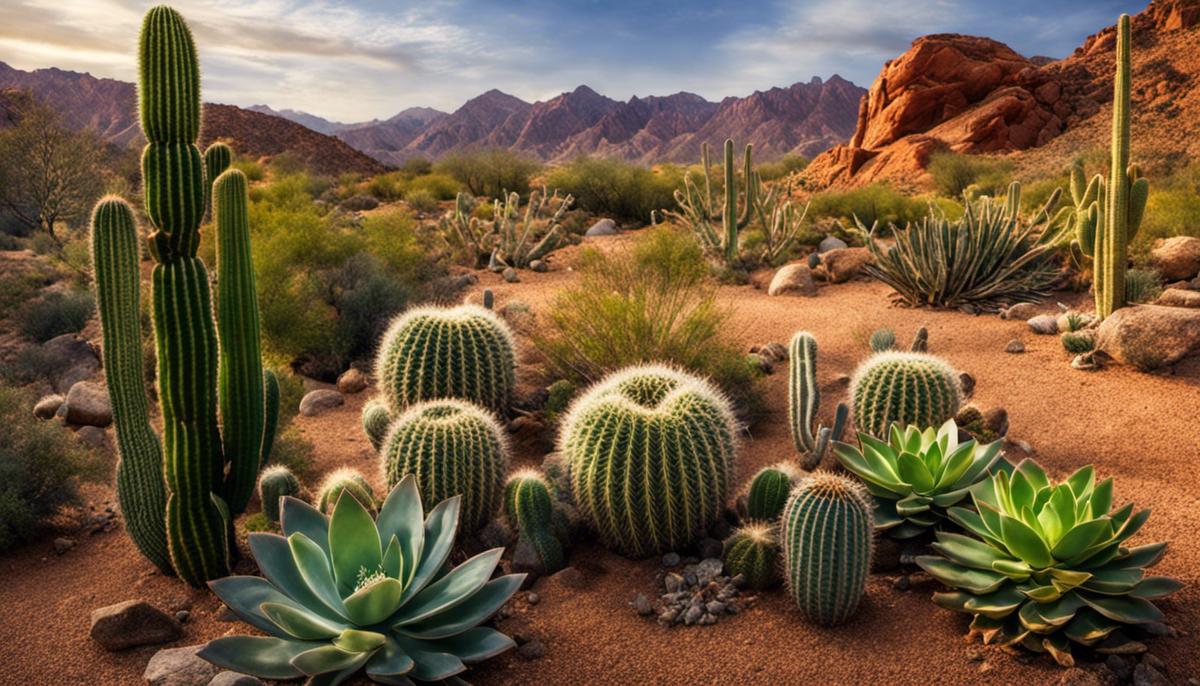
Exploring the Taxonomy
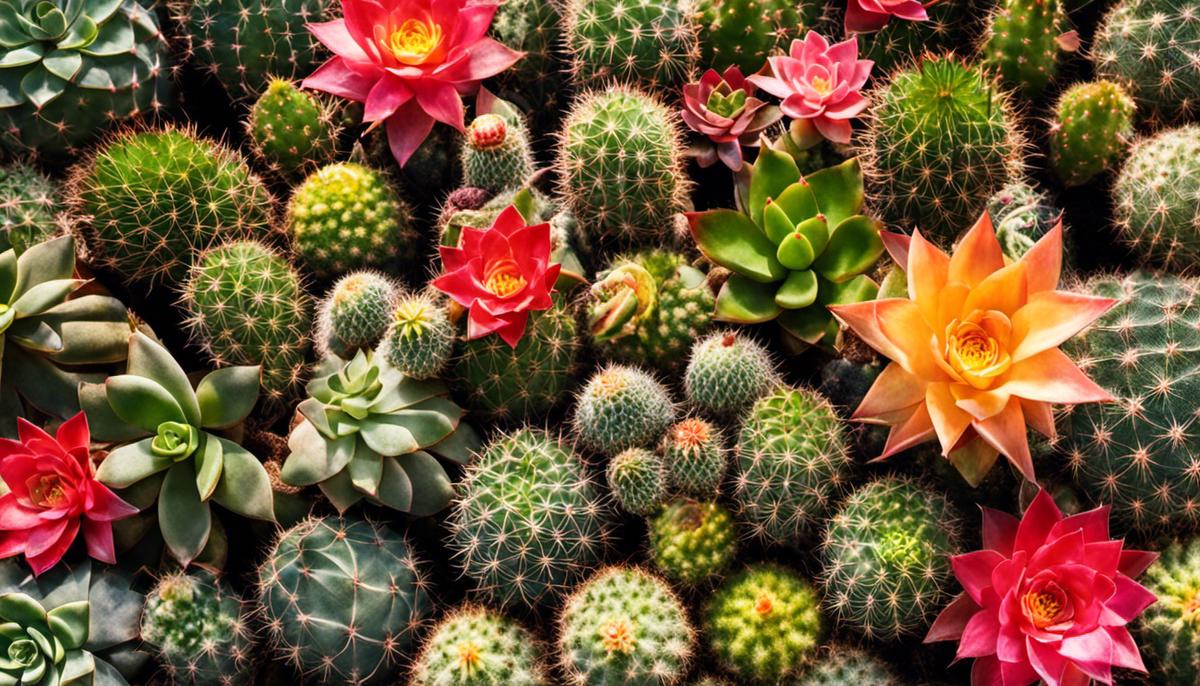
Caring for Cacti and Succulents

Choosing Between Cacti and Succulents
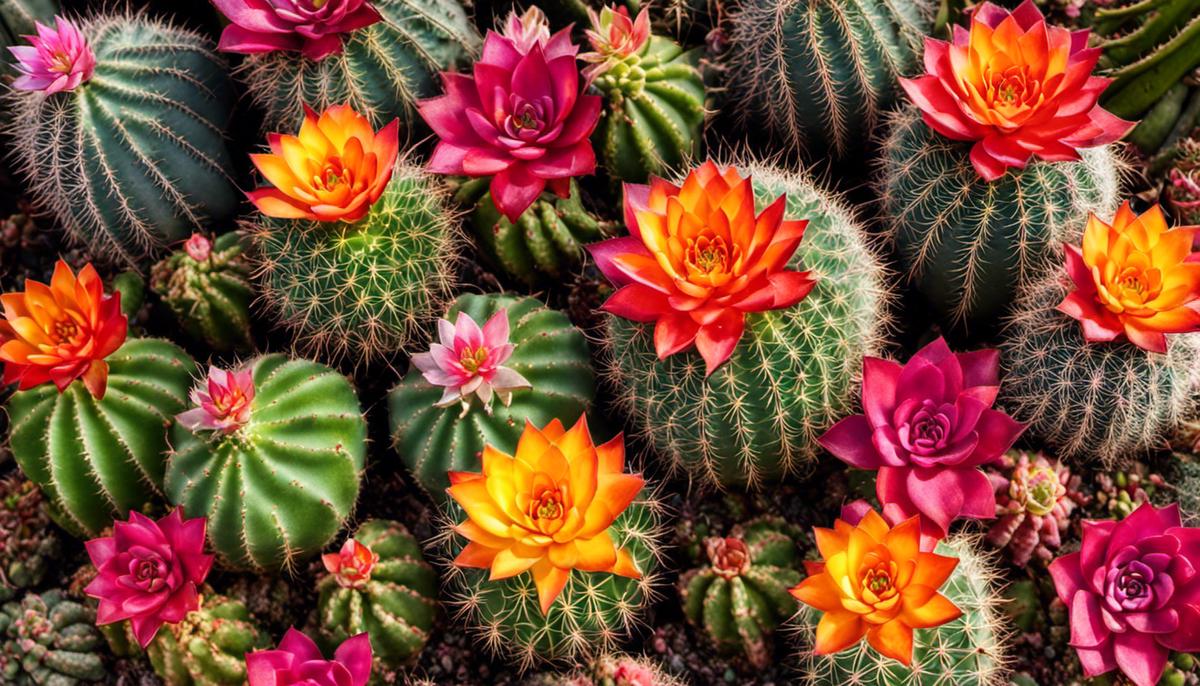
Cacti and succulent popularity
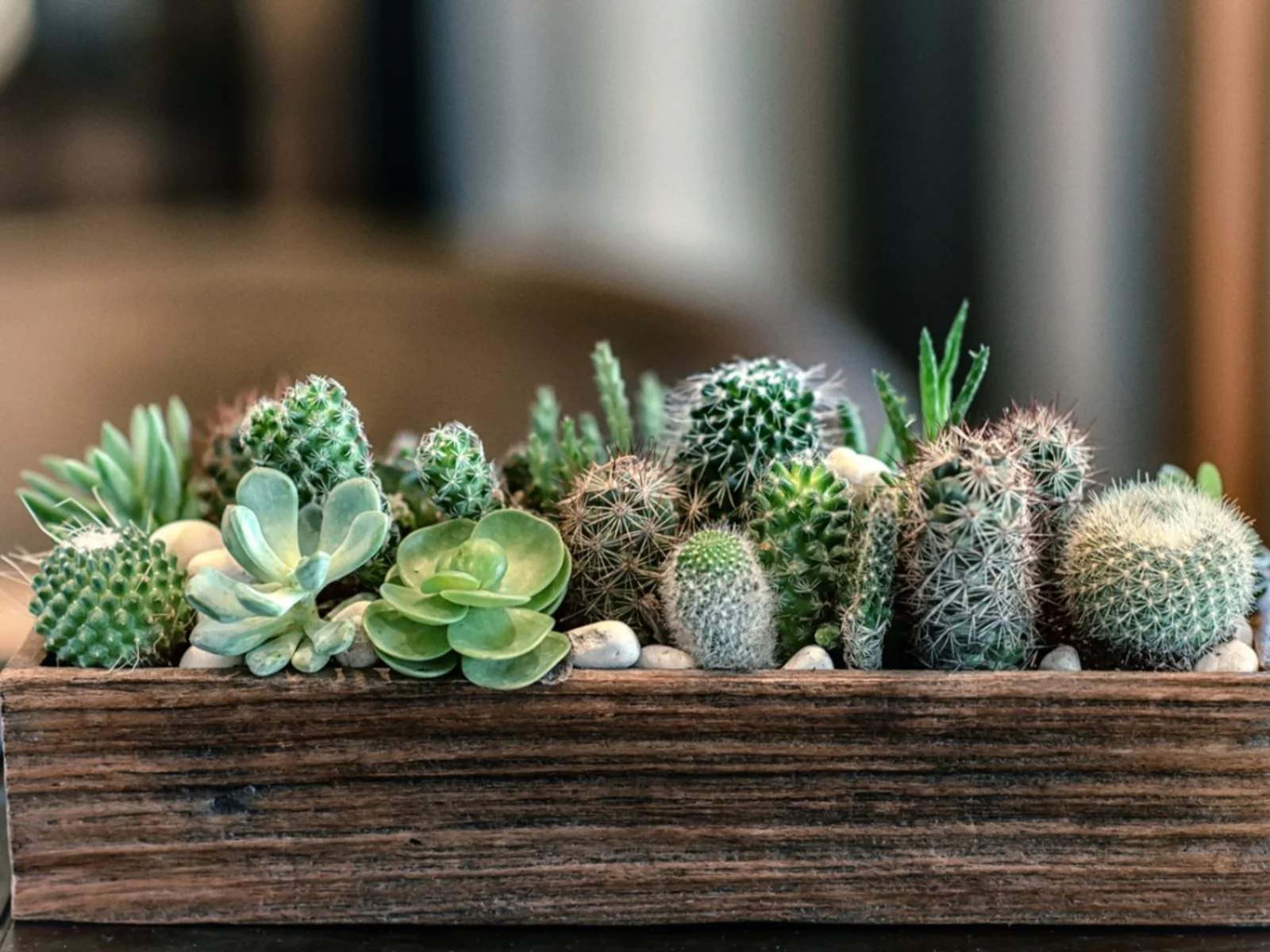
Differences between cacti and succulents